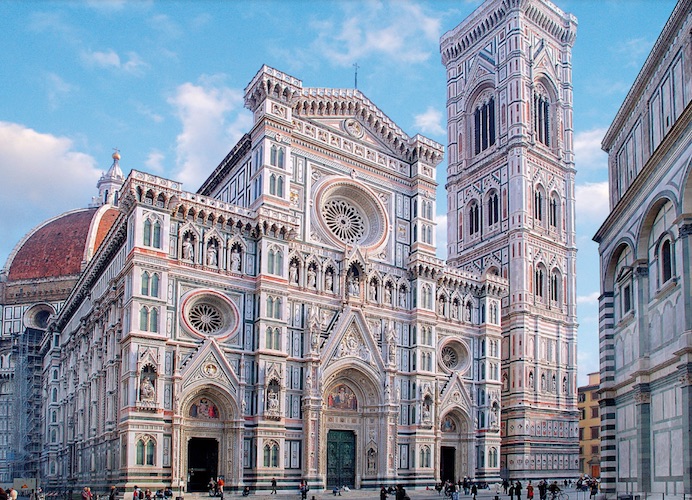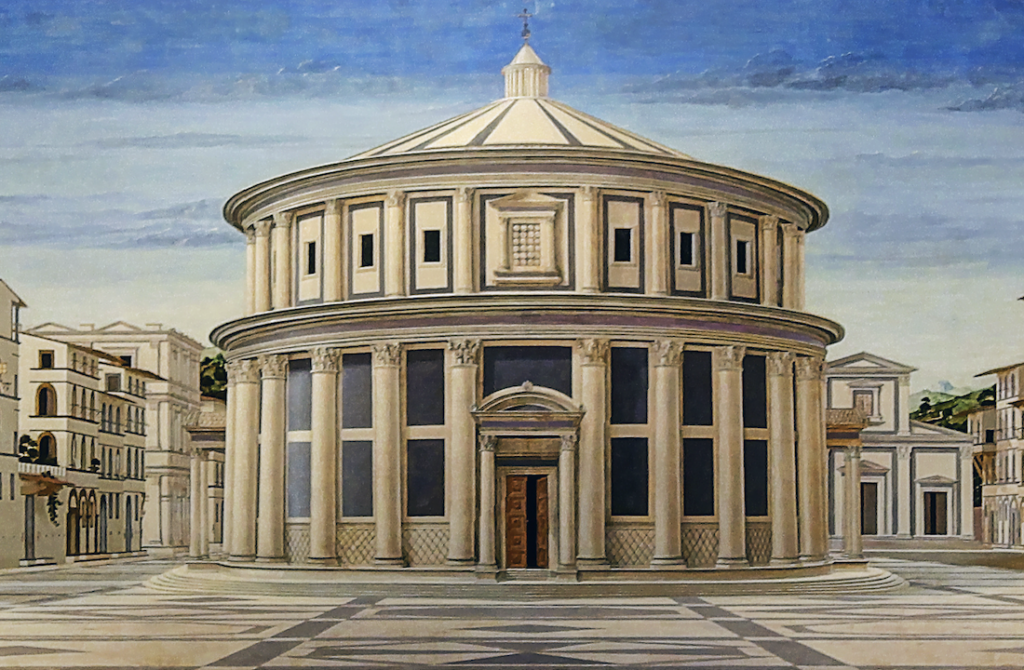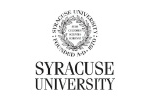The cathedral of Florence (1296-1468CE) is not only the defining architectural monument of the city, it is also one of the few that has free admission. Combined with the breathtaking quantity of white, green and pink marble decorations on the exterior of the church, it is not surprising that each day long lines form to visit the interior of this great building. But upon finally entering the church, most visitors are disappointed. The rather austere brown and white interior, although enormous in scale, contrasts strikingly with the highly decorative exterior. Expressions such as “That’s it…”, or adjectives such as “somber”, “sober”, “sparse” or even “boring” are those most often used to describe the ascetic interior. Often times, people even ask “Is it finished?”, hoping to find some rationalization for their disillusionment. Yet, if a visitor was to look deeper and beyond simple superficial ornamentation, he/she would discover that boredom can be both beautiful and profound.
More than an unsuccessful Gothic-style church, Santa Maria del Fiore (which is the cathedral’s proper name) should be described as a proto-Renaissance church as regards its interior design. In Florence cathedral, architecture is both function and decoration. Francesco Talenti, who was the architect of the cathedral interior, was, what we call in the business, “an architect’s architect”. He believed that if the interior walls were covered with painting or sculpture decoration, that one would no longer admire the “dignity of the wall”, but what is on that wall instead. Not only does this resulting bi-chrome brownstone/stucco pattern foreshadow Brunelleschi’s grey stone/stucco interiors at his great basilicas of San Lorenzo and Santo Spirito, but so too does Florence cathedral’s use of a proportional scheme. The central nave bays of the cathedral are perfect squares with 17.15m sides, while the side-aisle bays are rectangles, which areas are half of the nave squares. While technically pointed – and therefore Gothic in style – the nave arches have such wide bases that they seem to be tending towards semi-circular – and therefore Renaissance – in shape. Such un-acute arches defeat any structural advantage inherent in pointed arches. What’s the point of building pointed arches with such large bases? In other words, it’s pointless to build pointed arches in such a way (bad puns intended!)
Moreover, the general lack of decoration in the nave allows the visitor to move unhindered and undistracted – a sort of architectural metaphor for the terrestrial journey of life – towards the great octagonal crossing space below Brunelleschi’s majestic dome. Upon arriving, the visitor has entered into the main liturgical space of the church, with the high altar located at the very center of the crossing space and surrounded by an octagonal marble choir. And if the nave of the church symbolizes the journey of life, then the crossing space represents the spiritual destination – heaven/chi/nirvana/bliss – however one wishes to define it. This heaven is represented not only architecturally in the form of the dome, but pictorially in the great amount of decoration below it. From Della Robbia’s glazed terracotta reliefs above the sacristy doors, to the celebrity-designed stained-glass windows by the likes of Uccello, Donatello, and Ghiberti, and culminating in Vasari and Zuccari’s nearly 35,000ft2 of fresco decoration representing the “Last Judgement” that adorns the interior surface of the dome, one nearly forgets that the space that led them to this point was almost entirely void of decoration, and that sometimes, “boring” can be beautiful…




















